Saumur to Le Thoureil
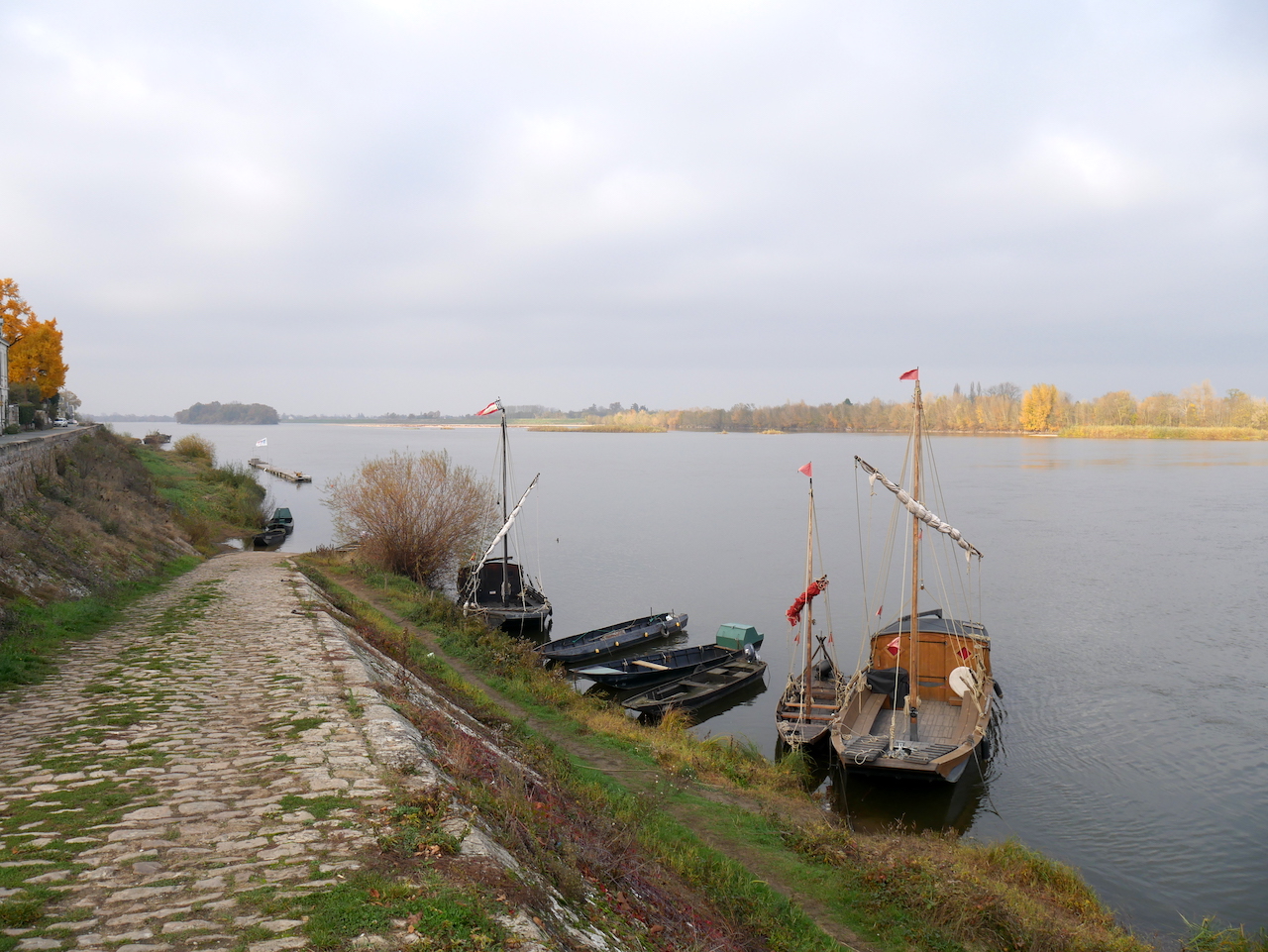
Pays de la Loire
13. Saumur to Le Thoureil
Medium
7h
27,3km
+542m
-554m
Step
Embed this item to access it offline
You leave Saumur by following the banks of the Thouret and then the Loire to then alternate between the cereal fields on the plateau and the banks of the Loire. A rich heritage awaits you.
8 points of interest
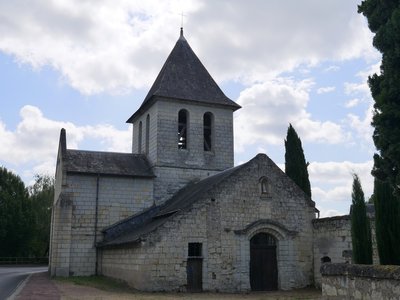
Église Saint-Hilaire à Saint-Florent Saint Hilaire - Amis saint Colomban TouristSaint-Hilaire Church in Saint-Hilaire Saint-Florent
It is likely that this place of worship predates the monastery of Saint-Florent. Its name is attested in 866 by an abbot of the monastery. It is located on the banks of the Loire River at the exit of Saumur in the old village of Saint-Florent-le-Vieux.
The present church is not the one mentioned in the texts. It is the result of a stone construction built in the 11th century, rather in the first half. Packed under its imposing bell tower, it seems Romanesque, even if only a few original elements remain. A few sections of walls and capitals in the north transept, rough and very worn, are original. A new nave and façade were added in the 18th and 19th centuries.
The church is closed.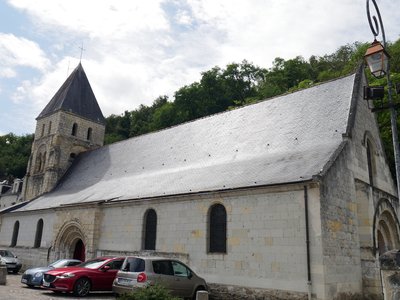
L’église Notre-Dame de la Prée des Tuffeaux à Chènehutte - Amis saint Colomban TouristÉglise Notre-Dame de la Prée des Tuffeaux in Chènehutte-Trèves-Cunault
This church built in tuffeau (local stone) owes its name to the meadows that bordered it in medieval times, when the Loire River flowed further north.
The square tower of the bell tower and the side door of the choir date from the 12th century. The bell tower and its geminated bays are typical of Romanesque art.
The chapel was sufficient for several centuries but the economic activities, stone extraction and cutting, and navigation on the Loire, attracted a new population. In 1837, the church was enlarged, the side door of the Romanesque period was dismantled to be inserted, stone by stone in the new masonry.
L’église Saint-Aubin et la tour de l’ancien château à Trèves - Amis saint Colomban TouristSaint-Aubin Church in Trèves-Cunault
In the 8th century Pépin le Bref, father of Charlemagne, gave the Clementiniacus estate to the Benedictine monks of Saint-Aubin d'Angers who founded the Saint-Macé priory nearby. The monks of Saint-Aubin d'Angers began building the church in the 12th century. It will be restored in the 19th century.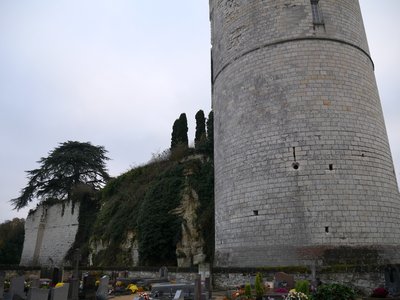
La tour et une partie des anciens remparts sont encore visible à côté de l’église Saint-Aubin - Amis saint Colomban HistoricalTrier-Cunault Castle
The feudal clod and the Tower of Trier
In the 11th century, the Count of Anjou Foulques Nerra established a fortified mound on the heights of Trier. It was from this stronghold that in 1026 he attacked Lord Gildouin, who held the Saumur region on behalf of Eudes II of Blois.
The Tower of Trier is the only remnant of Robert the Mason's former castle (15th century). It was connected to the rest of the castle by a drawbridge. In 1750, Trier Castle, which had been converted into a pleasure residence, was sold to Jean de Stapleton. He had it demolished, leaving only the main tower. The three lower levels are devoted to the defence and the kitchens. The last two floors are those of the seigneurial apartments. A staircase leads to the terrace surrounded by a machicolated parapet walk.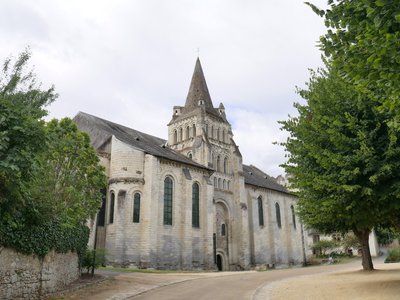
Clocher roman de l’église Notre-Dame de Cunault - Amis saint Colomban TouristNotre-Dame Church in Cunault
Notre-Dame de Cunault is the church of a priory located in the former commune of Cunault (now Chênehutte-Trèves-Cunault).
The first building was a monastery founded by Saint Maxentius, evangelizer of the region, in the 4th century. In the 9th century, the monks were driven out by the Viking invasion.
As a refugee in Tournus in Burgundy, the priory became a dependency of Tournus Abbey.
In 1741, after having suffered the torments of the Wars of Religion, the priory was suppressed and the choir dismantled.
In 1754, the nave became the new parish church of Cunault, replacing the parish church of Saint-Maxenceul, destroyed that year by a hurricane. Remains are visible near the cemetery.
The church reveals a large interior. It has a large and luminous ambulatory. The last bays of the nave are built in the Angevin Gothic style.
Its austere 13th-century facade is pierced by a tympanum.
Notre-Dame de Cunault is famous for its 223 sculpted capitals and its murals, which make it a real artistic treasure.
The church keeps in its place the shrine of Saint Maxenceul, the founder of the abbey church, it is carved in a single block of walnut.
Façade de l’église saint-Vétérin de Gennes - Amis saint Colomban TouristSaint-Vétérin Church in Gennes
The Saint-Vétérin church already existed in the 9th century and belonged to the royal domain. In 845 King Charles the Bald gave the church to the Abbey of Saint-Maur. Only a few elements remain from this period. The church was regularly restored, probably as a result of a sloping and unstable ground.
L’église Saint-Eusèbe de Gennes - Amis saint Colomban HistoricalSaint-Eusèbe Church and the Saumur Cadet Memorial
The Church of St. Eusebius is located on Via Columbani, it still preserves all its eastern part (choir and transept) from the Romanesque period. The nave is partly ruined but the south wall has a small device probably dating back to the Carolingian period.
The base of the bell tower is from the 13th century and the spire, from the 15th century, was destroyed in 1940 and again in 1944. It was during the Second World War that an observation post was set up in the bell tower, which caused the spire to be destroyed by German shells.
THE BRINE CADET MEMORIAL
Armed with their training equipment, officer cadets from the Saumur Cavalry School opposed the German advance on the Loire in June 1940. At the end of May, the men deployed from Gennes to Montsoreau, a front of 40 km. While Pétain's speech calling for an end to the fighting and the intention of an armistice was broadcast on 17 June 1940, the pupils were to hold the position under the command of Colonel Michon.
On 19, 20 and 21 June 1940, they fight with courage and determination in a sacrificial battle against the German troops superior in number and armament. It is the first act of armed resistance on the national territory. The graves of the Cadets killed in action, initially grouped together in the Gennes cemetery, were transferred to the foot of the Saint-Eusèbe church. The memorial has 17 graves of soldiers killed in Genoa and the Saumur region.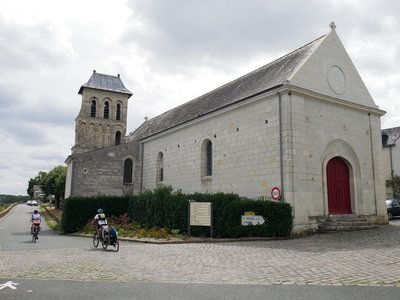
Église Saint-Genulf et Saint-Charles à Le Thoureil - Amis saint Colomban TouristSaint-Genulf and Saint-Charles Church in Le Thoureil
The church of Saint-Genulf du Thoureil was built in the 11th century on the alluvial terrace on the banks of the Loire, out of reach of the floods of the Loire. It was in the 13th century that the bell tower was built on the Loire side.
The construction of the Grande Levée d'Anjou from the 12th century, on the right bank of the river will have harmful repercussions on the sanctuary. The rise of the flood level, the acceleration of the current will undermine and reduce the bank. In the 18th century, the church, invaded by the highest waters, was disused and abandoned in 1781. In 1807, a new church was rebuilt and consecrated under the name of Saint-Charles.
Two very beautiful hunts from the Abbey of Saint-Maur de Glanfeuil are displayed on each side of the choir.
Description
Leave the Saint-Barthélemy church, cross Jeanne-D'Arc street, Théophile Vaugouin street, turn right, left, Léopold Palustre street,
- Turn right around the nautical stop on the left, go along the Thouet river, then along the Loire river, chemin de la Petite Monnie, La Loire à Vélo, on the banks of the Loire and cycle track next to the D 751 road.
- At Chênehutte fourth street on the left, chemin de la Chatelier, on the right, rue Jean-François Bodin, first on the right, rue de la Marquerie, on the right cross the brook, take the dirt road on the right in the forest.
- Left at the crossroads, left at the junction with asphalt road, first bend to the left take a dirt road in front of you, go along the field on your left, first road to the right in the forest, left at the crossroads D 751, left asphalt road between two properties
- Right, rue de la fidélité, second left, rue R Sausoin, right, rue Jean Godin, first left, rue de Conde, right, rue Jean-Luc, Rapado, left, chemin de la Barre, right, chemin de Saumur, right first dirt road in the forest, left on D 751,
- In Cunault, first street on the left, rue de la Prieurale, on the way up on the right, rue de la Sablière, third street on the left, rue de la Sablière, on the right at the crossroads Chemin de Saumur, straight ahead, rue du Clos Beaujon, straight ahead at the two roundabouts,
- Turn right on the asphalt road between two fields, turn right towards the Saint-Vétérin church, twice left, rue de la Cohue, twice right, rue de la République, at the roundabout turn left and first left, rue des Juifs, turn right, rue des Castines, go up to the Saint-Eusèbe church.
- In front of the church take the rue du mémorial, at the crossroads continue on rue du Mémorial, straight ahead at the crossroads rue de la Croix de Mission, chemin des 3 lapins, straight ahead on a dirt road in the woods, on the right then on the left, at La Pagerie on the right on an asphalt road.
- At the crossroads on the right, Chemin d'Argent continue straight on dirt road, crossroads of the 4 roads on the left, Chemin de Bessé on the right at the next road, Saint-Georges des Sept-Voies, cross the road CR79, first on the left, second road on the right in the wood,
- Turn right at the crossroads, follow the cemetery on your left, turn left onto a dirt road in the wood, cross the asphalt road, at the crossroads turn right onto a dirt road, cross the D356.
- At Cumeray on the left, end of the tarred road on the right, on the left, chemin du Lavoir on the right in front of the chapel, arrival Le Thoureil, first dirt road on the left after the cemetery on the right you arrive at the church of Thouriel.
- Departure : Saint-Barthélemy Church, 2 place Jeanne d'Arc, St-Hilaire-St-Florent, 49400 Saumur
- Arrival : Saint-Genulf Church, 5 Rue du Mail, 49 350 Le Thoureil
- Towns crossed : Pays de la Loire
Altimetric profile
Report a problem or an error
If you have found an error on this page or if you have noticed any problems during your hike, please report them to us here:





